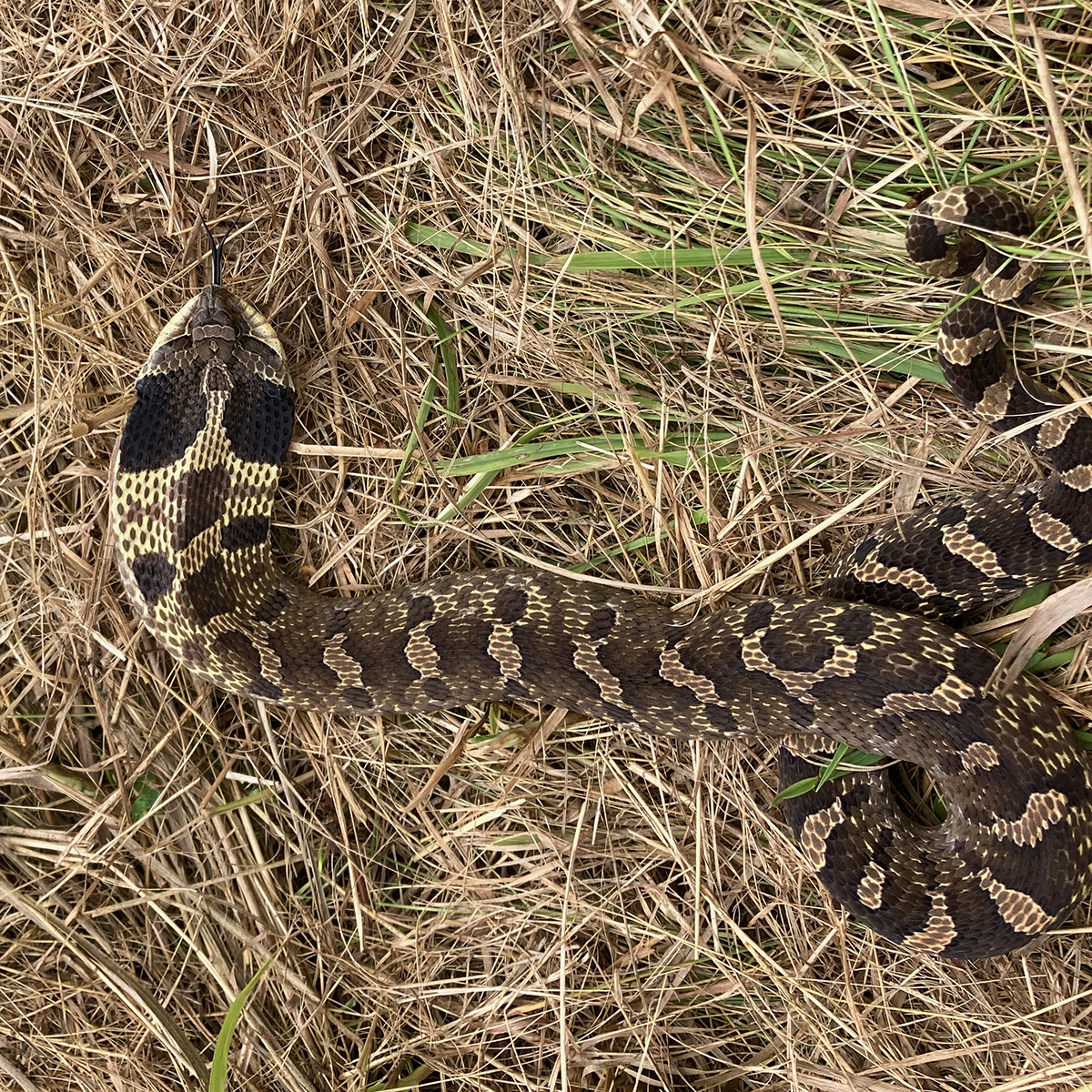I’m sure we all have experienced something that takes us back to our childhood: The aroma of a favorite food, the sound of a familiar place, or the sight of a local landmark. I guess when we reach a particular age, we long for that brief sensation of time travel. You are never exactly sure what will trigger it. Most recently, for me, it was coming across a snake.
As a kid, I was always poking around in the local woods. As a curious youngster, I came across a snake that began to puff up and make a hissing noise, and flattened out its head like a cobra. Not being a kid who picked up well on social cues, I found it fascinating. Like a mini Marlin Perkins, I got closer to get a better look. To my amazement, the snake flipped over on its back, twisted its mouth in a gruesome last gasp, and let off a foul stench. I thought I had killed it somehow. Feeling bad, I reached out and put the snake back on its belly. It flipped back over. Neat trick! It was trying to prove to me that it was dead. It was an experience that led me on an exploration of snakes that has stayed with me through adulthood.
I recently had an opportunity to relive that childhood experience at a local nature preserve in Marshall County. I came across a snake that displayed the exact same behavior as the one I had seen close to 50 years ago. It was like it had read the same script, acting out the death scene in some weird snake version of a Shakespearian tragedy. I was instantly sucked into its drama and transported back into the mindset of that little kid full of wonder and curiosity.
The snake is an Eastern Hognose. No one really knows how it developed this penchant for over-acting its own demise, but apparently it is an effective survival tool. If you can’t scare off your persecutor by puffing yourself up and making yourself look bigger, you can always make yourself less appealing by looking and smelling dead. It is a good example of how behavior can become part of a creature’s genetics. They have special bones and muscles that help them puff up and appear bigger. They also have special glands that emit the “death stench” substance to turn the stomach of their would-be adversary.
Several snakes have some type of defensive mechanism. Rattle Snakes have rattles after all, and several snakes without rattles will still rattle their tails. In my mind, though, the Hognose Snake still wins the Oscar for its complex act.
There are a two species of hognose snakes in Illinois. The Eastern Hognose (Heterodon platyrhinos), is the most common and is found throughout the state. The Western Hognose (Heterodon nasicus) is uncommon, and is a species that is listed as “State Threatened” in Illinois. Both species exhibit the same defensive behavior. Neither are venomous. Hognose snakes tend to feed on frogs and toads, so they are usually found in areas where spring pools or backwater lakes have consistent amphibian populations.
It had been several years since I’ve seen a hognose snake. The convincing performance of the snake evoked the same sense of wonder in me that it did so many years ago. I guess I was lucky that I had the chance to poke around the woods as a kid. We often hear how kids today don’t have the same opportunities that we did. However, the woods that I poked around in as a kid are in the middle of the city and they still exist. I’m sure there are still hognose snakes lurking in the wings waiting for their moment in the spotlight. It just takes a willingness to explore. If you have a young one in your life, encourage them to explore the world around them. The sense of wonder evoked by nature can last a lifetime.



1 comment for “Nature Rambles | Stench of sneaky snake still tantalizes senses”
Recent Comments
Wonderful story Mike